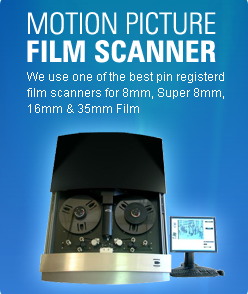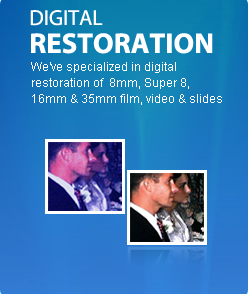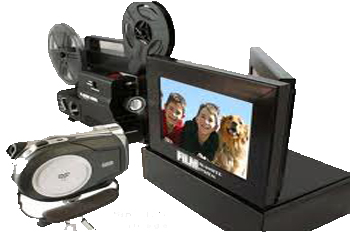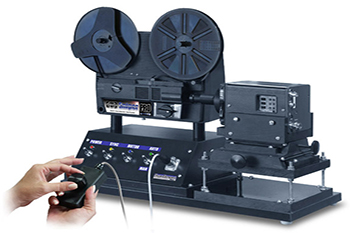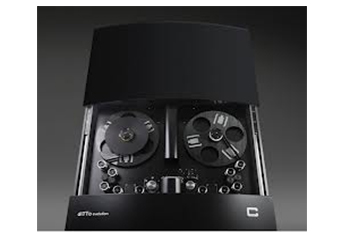
Film Conversion Equipment
Film Scanning and Film Transfer Equipment Types
The type of film scanning machine used for your 8mm, Super 8 or 16mm film conversion will have as much of an impact on the quality you receive as the resolution of the scan itself will. For example, if you wanted to digitize a photograph and tried doing it two different ways. You first put the photograph down on a table and took a picture of it using your smart phone or camera. Then you took the picture and scanned it using a flatbed scanner. If you compare the two side by side on your computer it will become really obvious that the flatbed scanner produced a digital image as good as the photograph. However, the picture you took with your phone or camera does not look close to the quality of the original photograph.
The same goes for scanning your 8mm, Super 8 or 16mm film. The real-time and frame by frame machines below are using a camcorder to take a picture of your film. The motion picture film scanner and Datacine machine are scanning the film. The results will be significantly different.
Film Conversion Equipment |
|
Real Time
|
|
Frame by Frame
|
|
Professional Film Scanners
|
|
Equally important as resolution is the type of film transfer. There are a few basic types of film transfer processes. More than 80% of the companies out there today use a real-time transfer. Any type of real-time film transfer will result in video that is 40-50% worse than the film’s current condition.
So, at this point you’ve learned that film transfers can capture at standard definition (480 lines), high definition (1080 lines) or 2K (1556 lines). You’ve also learned about the 3 different types of film transfers being used today. In order from least to best quality we have:
The film transfer processes above are the basics types and do not include any restoration by themselves. Restoration comes in many different capabilities from color and exposure correction, to grain elimination, to stabilization
Houston Fun Facts: The population of the greater Houston metropolitan area is approximately 5 million people. Houston is located in eastern Texas, on Galveston Bay, near the Texas Gulf CoaSt It is approximately two hours from the Texas/Louisiana border. It is unofficially nicknamed the "Bayou City" because of four bayous that run through the city. Houston's official nickname is "Space City" since it is home to NASA's Lyndon B.
Texas Fun Facts: Spanish missionaries were the first European settlers in Texas, founding San Antonio in 1718. Hostile natives and isolation from other Spanish colonies kept Texas sparsely populated until following the Revolutionary War and the War of Mexican Independence, when the newly established Mexican government began to allow settlers from the U.S. to claim land there. This led to a population explosion, but dramatically reduced the percentage of the population with Mexican heritage, causing friction with the government in Mexico City.
